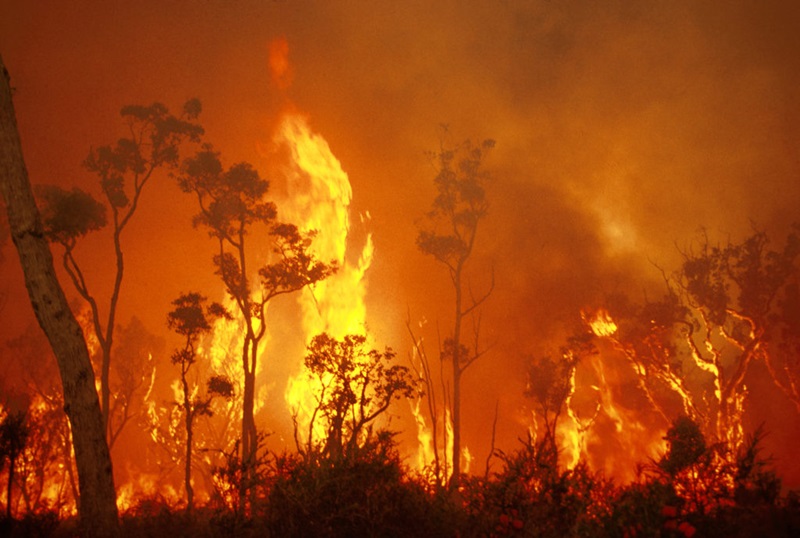Opening the Secrets of Bushfire Threat Evaluation: The Duty of a BAL Report
Opening the Secrets of Bushfire Threat Evaluation: The Duty of a BAL Report
Blog Article
Just How BAL Report Impacts Shrub Fire Security Actions
In the world of bush fire defense, the Building Assault Degree (BAL) report stands as a critical tool that dramatically influences the safety and durability of homes in fire-prone locations - BAL Report. The influence of a BAL evaluation prolongs much past plain documents; it offers as the cornerstone for figuring out the proper construction requirements and fire security actions necessary to mitigate the dangers presented by bushfires. As areas face progressively extreme fire periods, recognizing just how the BAL record shapes these protective procedures ends up being extremely important for property owners, policymakers, and home builders alike
Understanding the Bushfire Strike Level

Significance of BAL Report Evaluation

Furthermore, the BAL report evaluation functions as a foundational action in abiding by legal commitments and needs connected to bushfire protection. Local councils and authorities usually mandate the entry of a BAL record as component of the planning and building approval process to make sure that buildings are properly secured against bushfire dangers. Stopping working to conduct a complete BAL record analysis can cause insufficient defense procedures, leaving buildings at risk to ruining bushfire incidents.
Building Specifications Based on BAL
An extensive understanding of the Bushfire Attack Degree (BAL) makes it possible for residential property owners to execute construction requirements tailored to their particular risk account. Building criteria based upon BAL are vital in reducing the impact of bushfires on residential or commercial properties. The BAL ranking classifies the prospective risk a property encounters throughout a bushfire on a scale from BAL-Low to BAL-FZ (Flame Zone) Each BAL degree matches to specific building and construction needs described in the Australian Basic AS3959-2018 Building And Construction of Structures in Bushfire-Prone Areas. Residential or commercial properties identified as BAL-Low might only call for basic procedures such as clearing debris and keeping gardens, while those in higher BAL classifications need even more robust procedures like ember displays, fireproof products, and secured windows. Sticking to these building and construction standards not just enhances the structural durability of the building but likewise boosts the total security of citizens throughout a bushfire occasion. Therefore, residential property proprietors must thoroughly consider their BAL score and abide by the equivalent building and construction standards to effectively guard their residents and homes.
Executing Fire Protection Actions
With the structure of building standards based upon Bushfire Assault Degree (BAL) in area, the focus currently shifts in find out here the direction of the useful application of fire security steps to fortify properties versus bushfire risks. Executing fire security procedures includes a mix of passive and active strategies to boost the resilience of buildings in bushfire-prone areas. Easy procedures consist of making use of fire-resistant building products, mounting cinder guards on vents, securing gaps in wall surfaces and roofing systems, and keeping a clear area around the property devoid of combustible plants. Energetic steps include having firefighting equipment readily offered, such as hose pipes and water pumps, as well as creating a defendable room around the residential or commercial property by getting rid of plants and having a well-maintained yard. In addition, establishing an evacuation strategy and making sure all homeowners understand emergency procedures are crucial components of efficient fire security actions. By integrating both passive and active methods, buildings can substantially reduce their vulnerability to bushfire events you can try here and boost the security of owners.
Safeguarding Residences Against Bushfires
Properly safeguarding homes versus the damaging influences of bushfires requires a positive and thorough method to fire defense steps. Home owners staying in bushfire-prone areas must prioritize the implementation of different strategies to improve their residential property's resilience against wildfires. One basic facet is creating a defensible space around the home by keeping a clear area complimentary of flammable products. This consists of regularly trimming greenery, eliminating dead plants, and making certain a risk-free range in between trees and structures. Installing fireproof roof covering materials can likewise substantially decrease the threat of coal attacks and direct fire contact. In addition, securing vents and gaps to stop ash breach, as well as incorporating fire-resistant doors and home windows, can aid fortify the home's protection versus bushfires. Spending in a trustworthy water resource, such as a properly maintained automatic sprinkler or a committed water container, is important for supplying water throughout fire emergencies - BAL Report. By embracing a proactive stance and incorporating these safety steps, home owners can dramatically raise their opportunities of guarding their homes versus bushfires.
Conclusion
Finally, the Bushfire Strike Level (BAL) record plays a vital function in figuring out the required defense steps against bushfires. By evaluating the BAL, building and construction requirements can be tailored to minimize the risks and guarantee the safety of homes in fire-prone locations. Implementing fire defense steps based on the BAL record is vital in safeguarding residential Get the facts properties from potential bushfire dangers. It is vital for homeowners to focus on BAL analyses and follow advised building standards to improve bushfire strength.
In examining bushfire threat to residential or commercial properties, comprehending the Bushfire Strike Level (BAL) is an essential part for implementing efficient security measures. In general, a clear understanding of the Bushfire Assault Level is necessary for executing appropriate defense actions and minimizing the influence of bushfires on homes.

Report this page